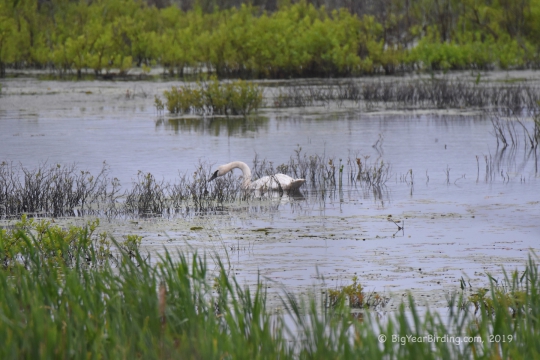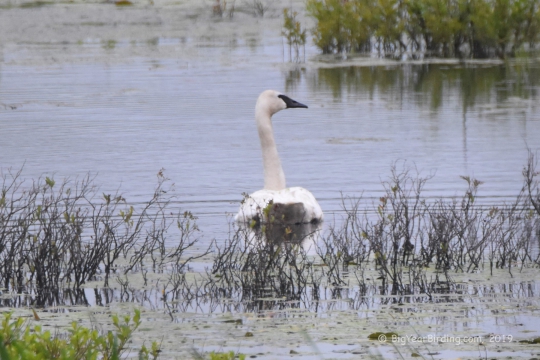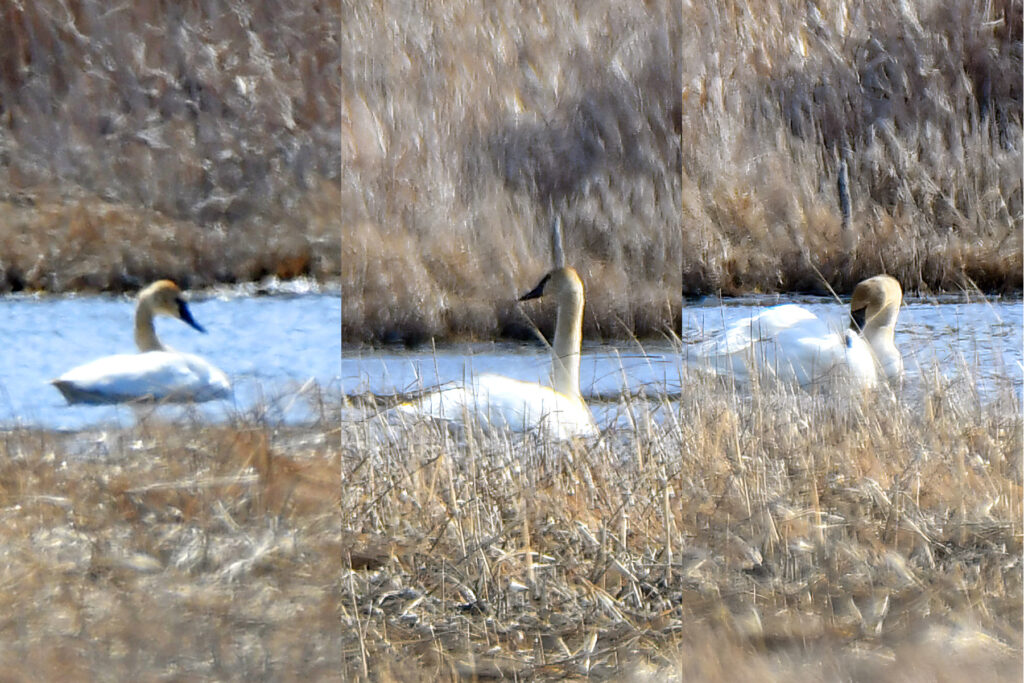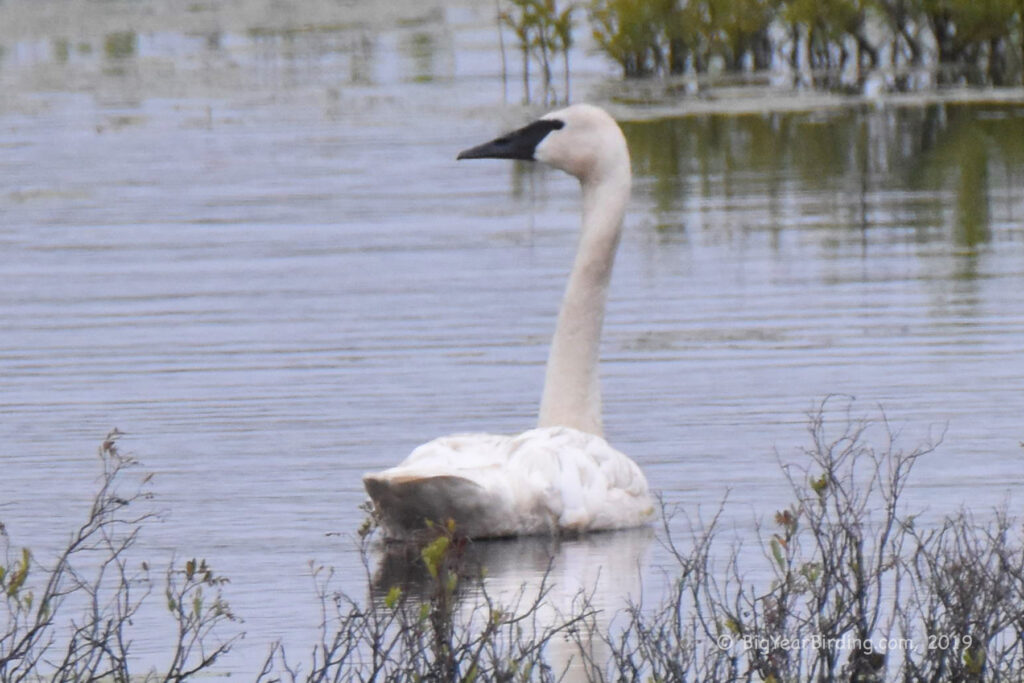The Trumpeter Swan, also known as Cygnus buccinator, is the largest waterfowl species native to North America. These magnificent birds can reach a length of up to 5 feet and a weight of up to 30 pounds, with a wingspan of over 7 feet. Their long necks and striking white plumage, combined with a distinct black bill, make them easy to identify in the field.

One of the most distinguishing field marks of the Trumpeter Swan is their trumpeting call, which can be heard from far distances. Their long, straight bills are also notably different from the slightly curved bills of the Tundra Swan. Trumpeter Swans also tend to have a larger overall size and a longer neck than Tundra Swans.
Trumpeter Swans breed in the far north of North America and winter in milder climates in the United States. They are known for their long-distance migration, with some individuals traveling over 3,000 miles between their breeding and wintering grounds. During migration, they often form large flocks and fly in a distinctive V-formation.

Despite their impressive size and striking appearance, Trumpeter Swans were once on the brink of extinction due to hunting and habitat loss. However, thanks to conservation efforts, their populations have rebounded and they are no longer listed as endangered. Today, they can be found in wetlands, lakes, and rivers throughout their range, making them a favorite sight for birdwatchers and nature enthusiasts.


